ETech 2009 was all about making interesting and deeply socially effective technological interventions in the world. And dematerializing products into services seemed to be one of the most powerful concepts elaborated there to accomplish this. Mike Kuniavsky in his presentation, “The dotted-line world, shadows, services, subscriptions,” noted:
“There’s great opportunity here to create an ecology of services embodied as robust, valuable, exciting new tools with focused, limited functionality, tied together with item-level identification and wireless networks. Whole classes of things that can enrich our lives and bank accounts are now possible thanks to the way ubiquitous computing interweaves services and devices at an intimate, everyday level….
We now have the technology to create whole new classes of tools for living in a way that is more useful and fun for individuals, more sustainable for society, and more profitable for companies. That way is to recognize the connectedness of all everyday things, and to build on it, rather than ignoring it.”
The picture opening this post is from Mike’s presentation (see Mike’s blog for a PDF with all of the images and notes (884 PDF), and the original presentation description).
An ecosystem using item-level identiï¬cation, wireless networking, and data visualization is evolving that links everyday objects to information about those objects – what Kuniavsky calls their “information shadow.â€Â Because every object can be uniquely identified and that identification can be associated with a cluster of metadata, it “exists simultaneously in the physical world and in the world of data.”
Mike mentioned Tom Coates’ “Age of Point-At Things” blog post to say that although Tom was talking about TV listings data, the same ideas can be applied to anything that’s uniquely identified. Also, Mike noted, he often references Ulla-Maaria Mutanen’s Thinglink project and her observation about Amazon ASINs to explain this concept which is, of course, closely related to the internet of things.
Until recently, Mike explained, accessing the information shadow was difï¬cult. The world of objects and the world of information shadows were separated by the difï¬culty of getting at the information. But now, increasingly:
“we can instantaneously see the world of information shadows as we’re interacting with the world of objects.”
Mike’s is not only conceptualizing these ideas, his company with partner Tod E. Kurt, ThingM, is producing hardware that will enable this vision.
“We’re a ubiquitous computing consumer electronics company, which sounds fancy, but we’re pretty small. We design, manufacture and sell ubicomp hardware.”
ThingM may be small now but they are at the leading edge of huge transformation. When asked, “How do you see the near-future city working with ubiquitous computing…” Adam Greenfield put it succinctly to Lalie Nicolas for Le Hub’s Ludigo project:
“I would go so far as to say that there will be no area or domain of urban activity that is not somehow disassembled and recomposed as a digital, networked, interactive process over the next few years. Objects, buildings and spaces will be reconceived as network resources; cars, subways and bicycles will be reimagined as on-demand mobility services; human communities are already well on the way to becoming self-conscious ‘social networks.’â€
For the rest of this short interview see Adam’s post, and for my recent long interview with Adam see here.
“‘Almost everything in this room is in a landfill, but just doesn’t know it yet.’Â This needs to change”
(Tim O’Reilly responding on Twitter to a quote from @AlexSteffen‘s talk)
Chart above from Jeremy Faludi’s presentation Priorities for a Greener World: If You Could Design Anything, What Should You Do? Presentation [PDF]
Interconnecting themes at ETech, Inhabitat noted, “formed bridges between luminary speakers from a variety of backgrounds, as Alex Steffen, Mary Lou Jepsen, Jeremy Faludi, and others reinforced the need to create repairable, open-source, long lasting products, reveal energy usage, and pursue forward-thinking strategies for a greener tomorrow.” But Jeremy Faludi, a sustainable design strategist and researcher, put the design challenge most directly:
“If you really care you need to dematerialize, turn products into services…”
The idea of data shadows has been a part of the conversation in ubiquitous computing for a long time (since Marshall McLuhan perhaps?). But, at ETech 2009, it seemed to have come of age.
It came up again and again, in the need to dematerialize stuff that seemed to be part of every conversation, from Faludi’s comments on the amount of toxic mining waste created in the manufacture of one laptop, to Raffi Krikorian’s presentation of Wattzon’s Embodied Energy Database (see slides here), and AMEE founder, Gavin Stark’s presentation, (also see Gavin’s blog on Energy Identity here).
The path to dematerializing the burdensome stuff that spells doom for our environment was not only presented conceptually and in creative solutions to specific problems (e.g. ThingM) at ETech. There were also hands on workshops (see my post on the two I attended) from Maker gurus, who were also often to be found in the Makershed, providing opportunities to experiment with and prototype your own solutions (my hat is off to Brady Forrest and the ETech committee for pulling all this together).
Connecting the dots…
In the wake of an “econolypse,” (neologism pulled from Bruce Sterling’s twitter feed -Â @bruces) and on the eve of environmental catastrophe, we may well have, as Adam Greenfield said to me here, “seriously screwed the pooch.”
But that does not mean we should not do everything we can to try to save the day.
And in the serendipity peculiar to a conference, I was talking in the corridor to Gavin Starks of AMEE who is working to create “the world’s energy meter” (on the right in the picture below), and Tony Mak from O’Reilly AlphaTech Ventures (to Gavin’s right), and Usman Haque of Pachube (on Tony’s right) - see my earlier interview with Usman here), when Tim O’Reilly (far left) came by with Steven Levy of Wired (to Tim’s left). More on Pachube, WattzOn, AMEE and Path Intelligence and how these projects may connect in an upcoming post. Path Intelligence like AMEE is funded by the O’Reilly Venture group.
And no sooner had I snapped the photo below, Mike Kuniavsky arrived.
It seemed such an historic meeting, I asked everyone if I could switch my recorder on.
Tim had just been explaining how the concept of “data shadows” fit with something he’d learned from Gavin in a breakfast conversation. Â Gavin was talking about what AMEE is learning from smart meter data collected from 1.2 million homes in the UK. Â The energy signature from each device is so unique that you can tell not only the make and model of major appliances in each home, but its age. Â Gavin is worried about the privacy implications (as we all should be), but nonetheless, you can see the implications for business. Tim framed a vital question: What new businesses are growing in the data shadows?
Tim O’Reilly: Here’s the other member of this conversation I was trying to broker. This is Mike Kuniavsky, Gavin Starks. I was talking in your session about the point he made in his session…Steve Levy from Wired…
Tish Shute: sorry, could you recap the point?
Tim O’Reilly: …just the idea about data shadows, I just think it’s just such a powerful metaphor that every .. and you went on to explain that potential for subscriptions and so on…
Mike Kuniavsky: Yes well what I was saying was that essentially every object that has an identifier associated with it, and there are a number of different kinds of identifiers out there, simultaneously lives in kind of the world of physical objects, and of the world of data. And the identifier links those two.
Steven Levy: Just like Sterling’s Spimes?
Mike Kuniavsky: A spime, it’s related obviously because we’re talking about RFIDs, but I’m really specifically talking about the fact that there is this information shadow that exists out there.
Tim O’Reilly: I think we’ll find it lots of different ways, that was my excitement in connecting these points.
Gavin Starks: My take on it is energy identity – that everything and everybody ends up with an energy identity that is the embodiment of their physical consumption.
Mike Kuniavsky: And I would say, not to argue, I would say that energy comes as part of my information shadow. Like I carry this baggage of data along with me. And whatever data is potentially appropriate can be glommed on to that. And then that can then be carried to something else that can manipulate it. And also that’s true about every object. And now that we have RFID tracking of individual objects, it’s true about literally every object, not just every class of objects.
Usman Haque: There’s a really beautiful story by Julio Cortazar where he uses the phrase “dressing the shadows” and it’s about the idea the shadow is not this sort of flat black thing but we can sort of put things onto it and slowly sort of grow it into something. It’s actually sort of more of a love story. But it’s a really interesting idea that the shadow’s not just the absence of but that it’s kind of the important part of it [for more see Usman’s paper, Dressing the shadows of architecture – which is also available in spanish here.]
Mike Kuniavsky: It’s the Peter Pan Barrie [JM Barrie, the author] thing. When Peter Pan’s shadow gets cut off and Wendy has to resew it back on. Potentially what all of these item level identification technologies are doing is they’re sewing the shadow back to the objects that they came from. And so you’re getting the information.
Gavin Starks: It’s like the two and a half kilo Macbook which has a 460 kilo carbon shadow.
Tim O’Reilly: It’s just a very powerful concept. That’s all I’m saying. I think it’s a metaphor that as soon as you have it, it makes it very easy to understand and to see a whole lot of things. So I’m very fond of it. Already it’s my new favorite toy. And it is great running into you all in the same place in the hall so I could introduce you all.
Image from Mike’s ETech presentation
“To create these new experiences we need to think about the design of both digital devices and infrastructures differently. We need step back from standalone tools and think about what service those tools deliver, then construct new avatars that fit better into people’s everyday experiences. We also need to step back from our infrastructural products and think about what services they enable. The electrical grid did not first start out as an abstract electrical grid in South Manhattan; it started as a way to deliver electric light. The electric bulb was not a standalone device, it was an avatar of Edison’s light delivery service and it was, first and foremost, designed to solve a specific problem for a large consumer market. Only then did the infrastructure it created expand to solve other kinds of problems.” Mike Kuniavsky’s ETech presentation, 2009
Talking With Mike Kuniavsky
Mike Kuniavsky and Elizabeth Goodman playing Bocci after ETech
The conversation with Mike began with a discussion about how to encourage participation. Usman Haque was present but he was called to lunch shortly. The question of encouraging participation in deep social change was another recurring theme at ETech. And, as Mike noted in his presentation:
“The design of these avatars [Kuniavsky's term for objects that are closely tied to services] is quite challenging. They can’t really be as personalized. You just can’t pimp your City Carshare car. You only get one kind of bike in the Call a Bike program. That’s an important problem to solve. We love to have our stuff be ours. However, the same technologies can bring that, too. Our key fob can bring our whole world with us, and whether sit down in a minivan, on a chair or in a plane we can bring our world with us. The thing can become our preferred colors, with our favorite music, and a picture of our loved ones on the dahboard, desk, or wall. Is it the same thing as owning it and  leaving your stuff in it? No, but it’s closer.”
Moreover:
.. objects have to change at a fundamental level. They have to be designed differently and they have to be described and discussed differently. The “owner’s†relationship to the object changes. The very idea of ownership changes. The solid object grows a dotted line that is filled-in as-needed, when-needed, and with the features that are needed. This is not the same thing as renting or co-ownership, its anytime/anywhere nature-enabled by the underlying technology makes these new service objects fundamentally new (Kuniavsky’ presentation at ETech).
Elizabeth Goodman’s brilliant presentation at ETech, Designing for Urban Green Space, discussed a study of urban green space volunteership as a way “to rethink urban green space as a spectrum of places with varying types of ownership and management.” Mike began the conversation by citing Elizabeth’s work.
Picture from Elizabeth Goodman’s presentation.
Mike Kuniavsky: Well what I was saying [re participation], citing my wife Elizabeth Goodman’s work …She did all this work at Intel on people’s health practices and the issues [around] instrumenting people’s lives in order to produce behavioral change and the problems with that.
The question is how do you, sense to encourage, rather than sense to punish, when all the indicators are going down, like economic indicators, ecological indicators. They’re just not going to be going up perceptibly in a very long time. You don’t want to discourage people. The way to create behavioral change is not to essentially keep punishing people for the past. And so I don’t know if I have a good answer for this, but there is this entire kind of thinking about how do you encourage people to keep doing things even when the actual easy-to-measure indicators like the first order indicators are all pointing down. It’s the classic thing about how do you get people to stay fit even as they’re aging. They are never going to be as healthy as they were when they were 50 again.
Usman Haque: I think you really hit on it when you said it’s not about the first order but about the second order measurements because that is exactly the kind of thing you want to change. It’s not that you want to stop it from falling because sometimes it’s impossible, you want to slow it’s rate.
Mike Kuniavsky: Exactly. You want to slow the rate because at the bottom maybe you can start looking at the first order indicator. But you can’t look at the first order indicator while things are going to hell. And so you can just say it’s less bad than it would have been. And figuring out how to take the first order sensory data and turn it into this kind of second order data that might be helpful for actually creating behavioral change, because ultimately that’s what all of this is talking about.
Tish Shute: This discussion about behavioral change wasn’t elaborated in your presentation was it?
MK: I presented on essentially the combination of being able to identify individual objects and the idea of providing services as a way of creating things… the servicization of things …turning things into services is greatly accelerated by network technologies and the ability to track things and what leads this to the potential of having fundamentally different relationships to the devices in our lives and to things like ownership.
Like we now have the technology to create objects that are essentially representatives of services – things like City Car Share. What you own is not a thing but a possibility space of a thing. This fundamentally changes the design challenges. I am pretty convinced that this is how we should be using a lot of these technologies is to be shifting objects from ownership models to service models. We can do that but there are significant challenges with it. What is happening is that we have had the technology to do this for a while, but we haven’t be thinking about how to design these services. We haven’t been thinking about how to design what I call the avatars of these services – the physical objects that are the manifestation of them, like an ATM is the avatar of a banking service. It is useless without the banking service it is a representative of, essentially.
If you imagine a this as an abstract idea, the ATM pokes out of [the service and into] a specific thing, but so does the bank tellers and so does the web site.
TS: It seems like this is a major shift in how we conceptualize our economy, culture and even government – what are the avatars of government?
MK: I think change in government is very hard. The example I have been using is the light bulb.  Start by solving a problem. The interesting thing about lightbulbs is that it was not the invention of an incandescent filament that glowed in a vacuum–that had been invented long before–it was the system that it was part of. And that is was part of a much larger design project that was created specifically for delivering the service of light to lower Manhattan in 1884.
TS: The grid hasn’t changed since Edison right – one of the earlier speakers mentioned this, that if Edison came back now he would say, “the grid is where I left it.”
MK: My point is that he wasn’t creating an abstract electrical grid, he was solving a problem by creating a system that had as its avatar – as its end point this bulb. But the bulb is actually not the system, it is merely the end point.
As we are thinking about the capabilities of these technologies my argument is we have to be designing service systems along that model.
TS: Web services?
MK: Not just designing Web services. I am a big fan of thinking about digital tools outside the context of general purpose computing devices. I consider laptops general purpose and I consider phones general purpose. Yes originally the handset started out just as a phone but now it is essentially a computer terminal and now you have netbooks and netbooks are essentially this halfway point between a phone and a laptop because now you are going to get net books with G3 cards. Essentially it is already a big phone. Those are general purpose computing platform, and I am not very interested in those.
TS: What motivated you to make that move in your thinking?
MK: I thought it was very narrow kind of thinking. I thought that the costs of computing represented by the technologies in the middle of the Moore’s Law curve – rather than on the right – that the cost of that had dropped so far that it seemed we could be making all kinds of devices that had information processing as part of what it is without being general purpose computing platforms.
The ipod is a good example. The ipod is a computer and you can run linux on it. It has more computing power than an computer did in the seventies. But who cares? The point of it is that you are using that power to solve a problem. You are applying the capabilities of information processing to solve specific problems. I have actually worked on infrastructural stuff. Twenty years ago I was associated with some early distributed computing stuff, then I did ten tears of web site design stuff, but i am essentially done with that. Because what I am really interested in is creating new kinds of tool, new classes of tools that use information processing as the core of what makes them interesting and valuable.
TS: Do these tools have to leverage networks to be useful?
MK: No I think it is possible to use information processing in a small scale without having to be online all the time. That is another one of the big toolboxes. It creates a deep shift in the capabilities of what you can do if you have a network. But the network can be really, really low bandwidth and simple for it still to be useful. You get these things that wake up once a month and spit out a packet with their telemetry. And they are incredibly valuable but they are not what you would normally consider to be an always-on device. It changes what they can do very fundamentally. But it is not this thing that requires there to be blanket wifi.
You can have devices out there and this is the sort of a cliched example but the guy riding a bicycle around with a wifi access point in rural area where you have no infrastructure to do it otherwise. But you have a little computer in every area and as he rides by they will exchange some data.
You don’t have to have fibre at the curb to really, really make interesting deeply socially effective technological interventions in the world.
Aaron Straup Cope, Flickr, Tod E. Kurt, and Mike Kuniavsky – discussing The Shape of Alpha (more on this upcoming!)
MK: What we are trying to do is to do that. We make a BlinkM – we make hardware – you saw my business partner Tod E. Kurt, he does all the heavy engineering and I am the guy who waves his hands around a lot and sends faxes. We came out with our first product a year ago was a smart LED. It is very simple RGB LED, it has a microcontroller and the microcontroller has firmware on it that kind of abstracts out the complexity of incorporating LEDs into a hobbyist product. So you can do arbitrary colors, so it can do smooth fades between any two points in RGB space, you don’t need to know anything about Pulse Width Modulation or even microcontrollers. You don’t have to know anything about anything except a little bit about electricity to use the thing. [In addition to BlinkM, BlinkM MaxM – the smart LED, Thingm has developed prototypes for other products such as the WineM RFID wine rack and LoveM LCD chocolate box.]
TS: I made a LilyPad enabled Tshirt yesterday, if I used your LED what difference would that make to my Tshirt?
MK: You could have the LED without changing the circuit at all, you could have it blink in any pattern, be any color, fade between colors. With our new one which is bigger than the old one, we actually have inputs. You could stick a wire on it or weave it into your shirt, and when you touch the wire it would change the behaviour of the LED.
TS: Nice, you are giving me even more incentive to finish my T-Shirt. I noticed that Tim O’Reilly was connecting you to Gavin Starks, CEO of AMEE just now, and Usman Haque of Pachube. What is the connection between you work on Thingm and these projects?
MK: I think what Gavin’s doing, as I understand it from Tim, he is essentially creating this new kind of sensor network that monitors electrical usage and allows you to feed it back. What that does is that creates a new kind of data in the data shadow of your house, you refrigerator or whatever. It suddenly grows this extra lobe out in the data world that then has these new capabilities that can be attached to.
TS: In terms of what you do with ThingM how are these ideas expressed through BlinkM?
MK: We’re still building stuff that’s on a slightly lower level, components. Our corporate goal this year is to make our first product, a stand alone solution to something. One of the easiest things you can do with our technology right now is you can replicate an Ambient Orb in about ten minutes. You could tie into their work. But you could also tie into it in a more subtle way where you could make lights smart so that when the net electricity cost goes above a certain threshold the lights know to dim or to turn off. And that can be dependant on how people use them. So rather than having a light you essentially associate a function or purpose with a light. Then the light knows based on electricity usage when it’s purpose has high priority enough to be on.
Not all of these ideas pour into our products, we can only afford to make LEDs.
TS: Still it is amazing how ThingM really is a flagship for what is big and important shift in the way we can relate to stuff. And what about Usman’s Pachube. Where does ThingM fit with that?
MK: I see Pachube less as a monolithic service than as a standard for device communication. Essentially it’s a proposal for interdevice communication, and potentially an easy way for people to define the way devices behave within their own personal ecology of smart devices. It’s something that’s in the early stages, and I think the barriers are not technological, the barriers are social. The barriers are understanding what this is for and why to use it. It’s not about will it work. It’ll work.
Image from Mike’s ETech presentation – original image source: Yottamark
“You can, hypothetically, look at any object and know where it was made, what it is made of, what your friends think of it, how much it sells for on Ebay, how to cook it, how to ï¬x it, how to recycle it, whatever. Any information that’s available about an object can now be available immediately and associated with that object.”
“Connect it with location information and you have Location Based Services for anything. This is Cabspotting by Stamen. As Tom Coates says, once we have a handle, you can throw the data around.” (Kuniavsky)
More to come on Stamen Design later! Tom Carden (Stamen Design) ran a workshop at ETech 2008, “Live, Vast and Deep: Web-native Information Visualization,” outlining the process of taking a real data set from an online API (such as Flickr or Dopplr) and shaping it into an informative, beautiful, and useful interactive graphic presentation and this year, Michal Migurski (Stamen Design), Shawn Allen (Stamen Design) gave a workshop on “Maps from Scratch: Online Maps from the Ground Up.” Eric Rodenbeck, founder and creative director of Stamen Design, presented on, “New Data Visualization: Reaching Through Maps.”
The picture above is of Eric Rodenbeck and Shawn Allen playing Bocci.

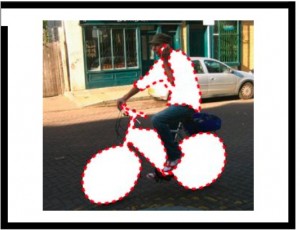
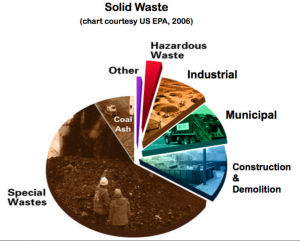

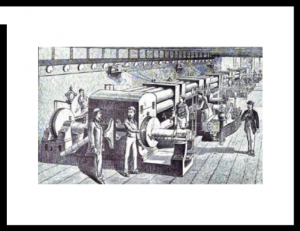
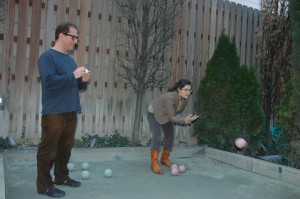
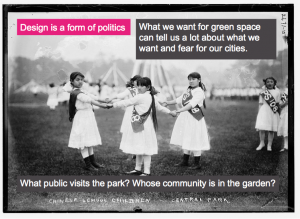
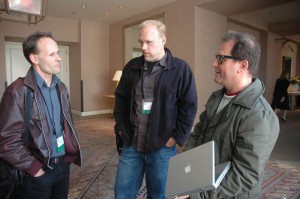
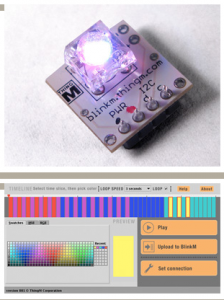
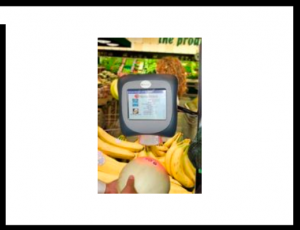
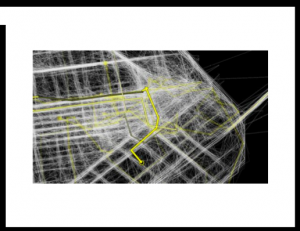
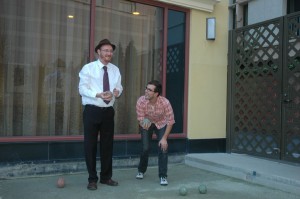
March 18th, 2009 at 10:52 pm
So here I am, reading this on my iPhone in a club in Austin after the city was nearly crippled by tens of thousands of incesant Twitterers who notified each other about what they were doing every step of the way. I’d like to see all this tech put to better use, towards a more sustainable future. Great post.
March 24th, 2009 at 12:28 pm
Fantastic. I’ve been thinking about how the service model could free up a lot of resources. I don’t need to own a refrigerator – I need to keep my perishables cool. Evolving major appliances to a service model would lower energy reqs and allow everyone to have the topline appliances (higher cost over longer time with guaranteed volume for mfg). It would be an excellent first-step towards World 2.0 with the goal of breaking the consumer-orientation while elevating everyone’s position on Mazlo’s pyramid.
March 24th, 2009 at 12:33 pm
Great interview, thank you. Because I’d like to read these interviews(dito Adam G) offline, I would appreciate a print-friendly-version.
March 24th, 2009 at 5:54 pm
Hi Tols thanks! What is your suggestion for a printer-friendly version?